Hubble finds spiraling stars, providing window into early universe
Friday, 09 September 2022 07:48 Nature likes spirals - from the whirlpool of a hurricane, to pinwheel-shaped protoplanetary disks around newborn stars, to the vast realms of spiral galaxies across our universe.
Now astronomers are bemused to find young stars that are spiraling into the center of a massive cluster of stars in the Small Magellanic Cloud, a satellite galaxy of the Milky Way.
The outer arm of the spira
Nature likes spirals - from the whirlpool of a hurricane, to pinwheel-shaped protoplanetary disks around newborn stars, to the vast realms of spiral galaxies across our universe.
Now astronomers are bemused to find young stars that are spiraling into the center of a massive cluster of stars in the Small Magellanic Cloud, a satellite galaxy of the Milky Way.
The outer arm of the spira Falcon 9 set to launch BlueWalker 3 to Low Earth Orbit
Friday, 09 September 2022 07:48 AST SpaceMobile, Inc. ("AST SpaceMobile") (NASDAQ: ASTS), the company building the first and only space-based cellular broadband network accessible directly by standard mobile phones, has announced its BlueWalker 3 (BW3) test satellite is planned to reach orbit September 10 from Kennedy Space Center in Cape Canaveral, Florida, a mission that plans to kick off testing with mobile network operator
AST SpaceMobile, Inc. ("AST SpaceMobile") (NASDAQ: ASTS), the company building the first and only space-based cellular broadband network accessible directly by standard mobile phones, has announced its BlueWalker 3 (BW3) test satellite is planned to reach orbit September 10 from Kennedy Space Center in Cape Canaveral, Florida, a mission that plans to kick off testing with mobile network operator Momentus First Demonstration Mission Status Update #5
Friday, 09 September 2022 07:48 Momentus Inc. (NASDAQ: MNTS), a U.S. commercial space company that plans to offer transportation and other in-space infrastructure services, has provided its fifth Mission Update on its inaugural Vigoride mission that launched on May 25.
Since the Company's last update on August 3, Momentus has successfully deployed an additional payload from its Vigoride orbital transfer vehicle. SelfieSa
Momentus Inc. (NASDAQ: MNTS), a U.S. commercial space company that plans to offer transportation and other in-space infrastructure services, has provided its fifth Mission Update on its inaugural Vigoride mission that launched on May 25.
Since the Company's last update on August 3, Momentus has successfully deployed an additional payload from its Vigoride orbital transfer vehicle. SelfieSa Help explore the future with ESA’s Advanced Concepts Team
Friday, 09 September 2022 07:42
Next week ESA’s future-oriented Advanced Concepts Team, the ACT, will mark its 20th anniversary by contemplating the coming two decades in space – and outside space researchers, engineers and students are cordially invited to take part.
Private Chinese satellite internet firm GalaxySpace secures major new funding
Friday, 09 September 2022 07:27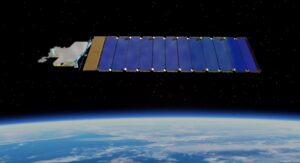
Chinese satellite internet startup GalaxySpace has raised new funding which the company says puts its value at $1.58 billion.
The post Private Chinese satellite internet firm GalaxySpace secures major new funding appeared first on SpaceNews.
MTG-I1 weather satellite shows off
Friday, 09 September 2022 06:33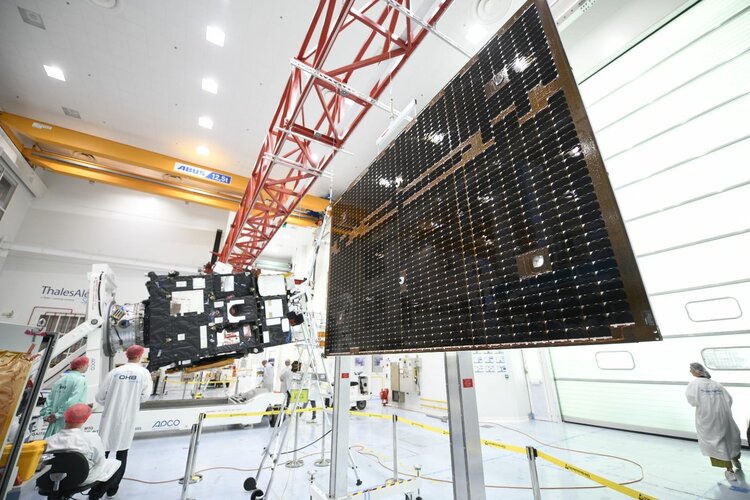
Before Europe’s first Meteosat Third Generation Imager leaves the south of France at the end of the month aboard a ship bound for French Guiana, this remarkable new weather satellite has been taking centre stage at Thales Alenia Space’s facilities in Cannes.
FCC to set five-year deadline for deorbiting LEO satellites
Friday, 09 September 2022 01:57
The FCC wants to require operators of low Earth orbit satellites to deorbit their spacecraft within five years after their mission ends, a much shorter timeframe than currently required.
The post FCC to set five-year deadline for deorbiting LEO satellites appeared first on SpaceNews.
NASA preparing for late September Artemis 1 launch attempt
Thursday, 08 September 2022 21:07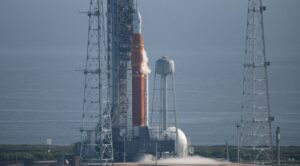
NASA is laying the groundwork for another attempt to launch the Space Launch System on the Artemis 1 mission late this month, pending both repairs to leaking liquid hydrogen lines and negotiations with the Eastern Range.
Blue Canyon delivers first satellite bus for DARPA’s Blackjack constellation
Thursday, 08 September 2022 18:48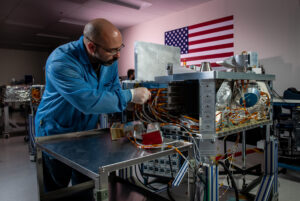
Blue Canyon Technologies delivered the first of 10 satellite buses DARPA ordered in 2020 for its Blackjack experiment in low Earth orbit.
The post Blue Canyon delivers first satellite bus for DARPA’s Blackjack constellation appeared first on SpaceNews.
Solid rocket fuel startup Adranos opens fuel-production facility in Indiana
Thursday, 08 September 2022 18:29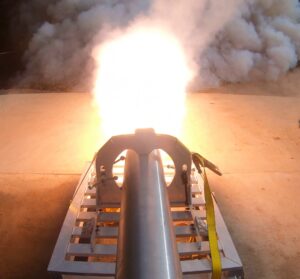
Adranos, a startup that manufactures solid rocket motors, announced Sept. 8 it opened a fuel-production facility in Indiana.
The post Solid rocket fuel startup Adranos opens fuel-production facility in Indiana appeared first on SpaceNews.
Solid rocket startup Adranos opens fuel-production facility in Indiana
Thursday, 08 September 2022 18:29
Adranos, a startup that manufactures solid rocket motors, announced Sept. 8 it opened a fuel-production facility in Indiana.
The post Solid rocket startup Adranos opens fuel-production facility in Indiana appeared first on SpaceNews.
Register now: ESA Open Day at ESTEC
Thursday, 08 September 2022 15:00
Registration is now open for the 11th annual ESA Open Day at ESTEC, open to all visitors. ESA’s ESTEC technical centre in Noordwijk, the Netherlands, will be open from 10:00 to 17:00 on Sunday 2 October, giving visitors a chance to meet astronauts, space scientists and engineers and learn all about the work carried out at Europe’s largest space establishment.
NASA may attempt Moon launch on September 23: official
Thursday, 08 September 2022 14:47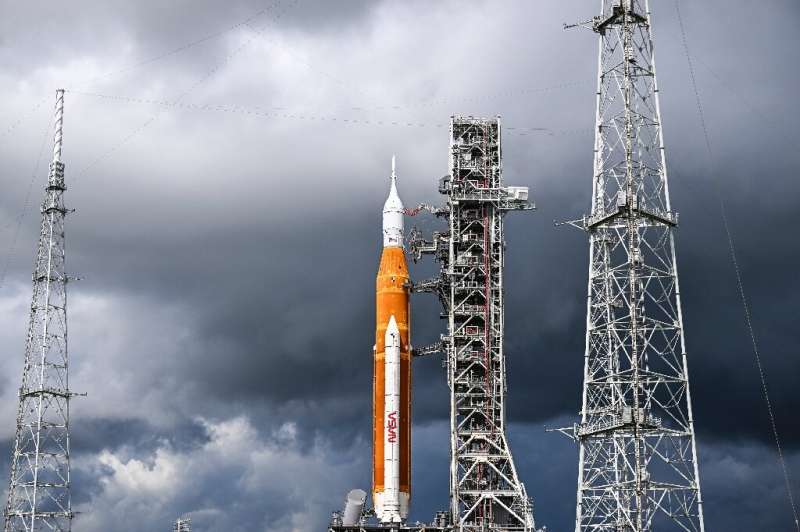
NASA is looking at September 23 and September 27 as possible dates for its next attempt at launching its Artemis 1 mission to the Moon, senior official Jim Free told reporters Thursday.
Two previous attempts were scrapped after the giant Space Launch System rocket experienced technical glitches including a fuel leak.
"The 23rd is a 6:47am window open for 80 minutes, and the 27th is an 11:37am window with a 70-minute duration," said Free, associate administrator for the agency's exploration systems development directorate.
NASA eyes two more dates in September for possible Moon launch
Thursday, 08 September 2022 14:47
NASA is looking at September 23 and September 27 as possible dates for its next attempt at launching its Artemis 1 mission to the Moon, senior official Jim Free told reporters Thursday.
Two previous attempts were scrapped after the giant Space Launch System rocket experienced technical glitches including a fuel leak.
"The 23rd is a 6:47am window open for 80 minutes, and the 27th is an 11:37am window with a 70-minute duration," said Free, associate administrator for the agency's exploration systems development directorate.
Spiralling stars provide a window into the early Universe
Thursday, 08 September 2022 13:00 Image:
Image:
Astronomers have been bemused to find young stars spiralling into the centre of a massive cluster of stars in the Small Magellanic Cloud, a satellite galaxy of the Milky Way. The outer arm of the spiral in this huge, oddly shaped stellar nursery – called NGC 346 – may be feeding star formation in a river-like motion of gas and stars. This is an efficient way to fuel star birth, researchers say.
The Small Magellanic Cloud has a simpler chemical composition than the Milky Way, making it similar to the galaxies found in the younger Universe, when heavier elements were more scarce.
